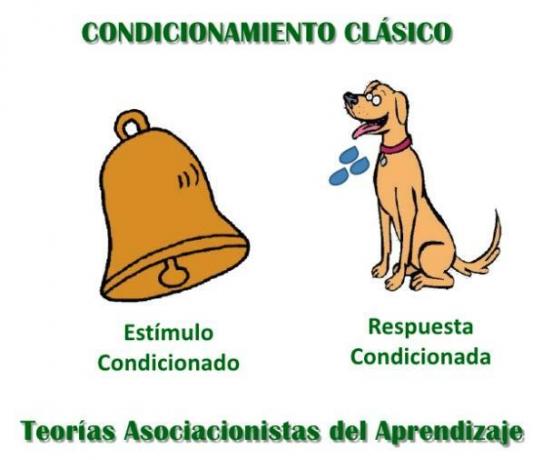
The elements or variables of classical conditioning are four: unconditioned stimulus (EI), conditioned stimulus (EC), unconditioned response (IR) and conditioned response (CR). Classical conditioning, also called Pavlovian conditioning, respondent conditioning, model stimulus-response or association learning (E-R), is a type of associative learning that was first demonstrated by Iván Pávlov.
Unconditioned stimulus (EI).
Any stimulus that, prior to the experimental treatment in question, produces a consistent and measurable response. By itself, unconditioned stimuli are those that produce innate reflexes in a strict sense, (but those that consistently produce a response, in advance and regardless of the experimental situation in question, even if the response is not innate). The unconditioned stimulus must produce the response consistently, that is, evenly and with a certain intensity or power.
The conditioned stimulus (EC). It is a stimulus that prior to mating with the EI does not produce the conditioned response
It is the answer that reflex mode, measurable and regularly, is produced by the unconditioned stimulus. Gormezano points out, the same EI produces or evokes the reaction of several effector systems, so that the unconditional responses to the same EI can be several. This forces us to clearly define the key that we are going to choose to define the conditioned response.
It is also necessary to distinguish IR from pseudo-conditioned or beta responses, which is a special sensitization of the effector systems that produces the isolated presentation of the IE, in such a way that before there is any CE-IE association, when When the subject is presented with a neutral stimulus, the pseudoconditioned response will be produced spontaneously, due to the special sensitization that the isolated presentation has produced previous of the IS.
Conditioned response (CR). It is the response that is learned and it is not exactly the same as IR, but only similar. Ordinarily it is to measure intensity that the RI. CR is properly the response that is elicited by the isolated presentation of the CE, once the CE-US connection has been established. The CR has to be clearly specified, defining it as the key response among all the responses of the effector systems excited by the EI.
A good criterion for specifying it is that it has to occur in the same effector system as the IR. The CR must be distinguished from the alpha responses that are unconditional answers to the CS in the same effector system in which the conditioned response has been defined. Other Variables There are other variables that influence the associability between the conditioned and the unconditioned stimulus, which are different from mere temporal contiguity.
There is the type of unconditioned stimulus that appears and the motivational circumstances of the subject. Also an important variable in the force with which the conditioning occurs is the previous experience with the stimuli. Two phenomena that influence conditioning stand out:
- The repeated exposure to an isolated stimulus it produces latent inhibition for the conditioning of said stimulus.
- The learned irrelevance It is the effect produced by the pre-exposure of the animal to the conditioned stimulus and the unconditioned stimulus without associating them.
This article is merely informative, in Psychology-Online we do not have the power to make a diagnosis or recommend a treatment. We invite you to go to a psychologist to treat your particular case.


